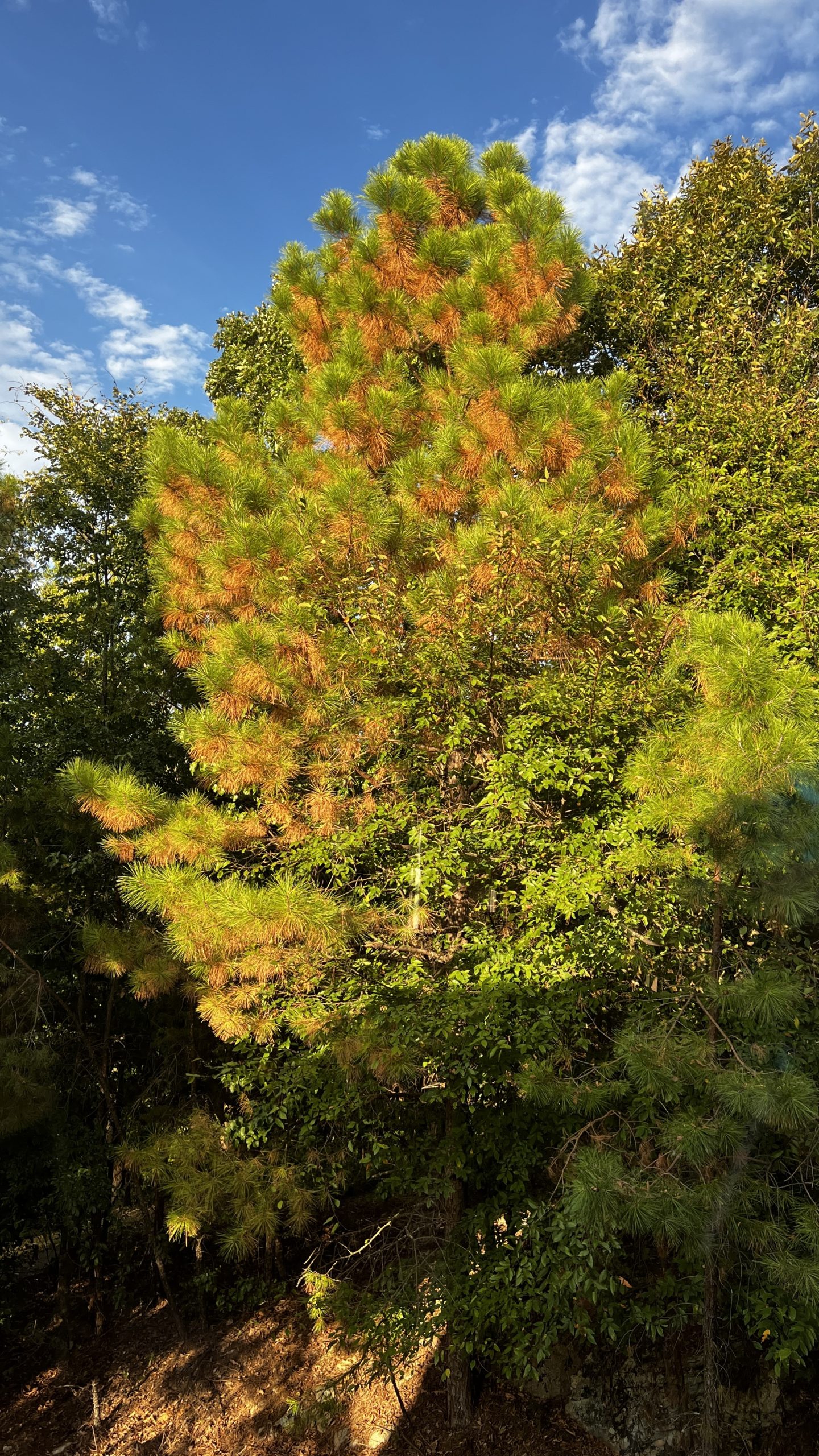Sure, those deciduous trees get all the attention in the fall, with their red, yellow and orange foliage, but pine trees also have an autumn ritual.
“Pine trees do have leaves that change color and fall,” said Vic Ford, a forester who heads up agriculture and natural resources for the Cooperative Extension Service, the outreach arm of the University of Arkansas System Division of Agriculture. “People forget that those needles are a pine tree’s leaves.”
Ford said Arkansans may be seeing a lot of brown needles on their trees. After a round of Labor Day storms, many of those brown needles have hit the ground.
“Usually, pine foliage falls a little later than this, but drought has accelerated the process,” he said. “Pines lose their foliage every fall but trees usually keep one or two years’ worth of needles” for photosynthesis.
“The brown foliage that was lost would have been lost later in the fall if the high winds and drought had not occurred,” Ford said.
“These needles would have turned brown in a normal year due to senescence”—essentially old age, he said. “Droughts often will cause the two-year-old needles to prematurely senesce and will have a heavier amount of needle fall.”
How do you tell whether your pine tree is shedding needles abnormally? Ford said disease can also cause defoliation, “but signs and symptoms of the causal fungus will be apparent on the needles by the observation of leaf spots. Foliage diseases will cause all ages of needles to turn brown.”




